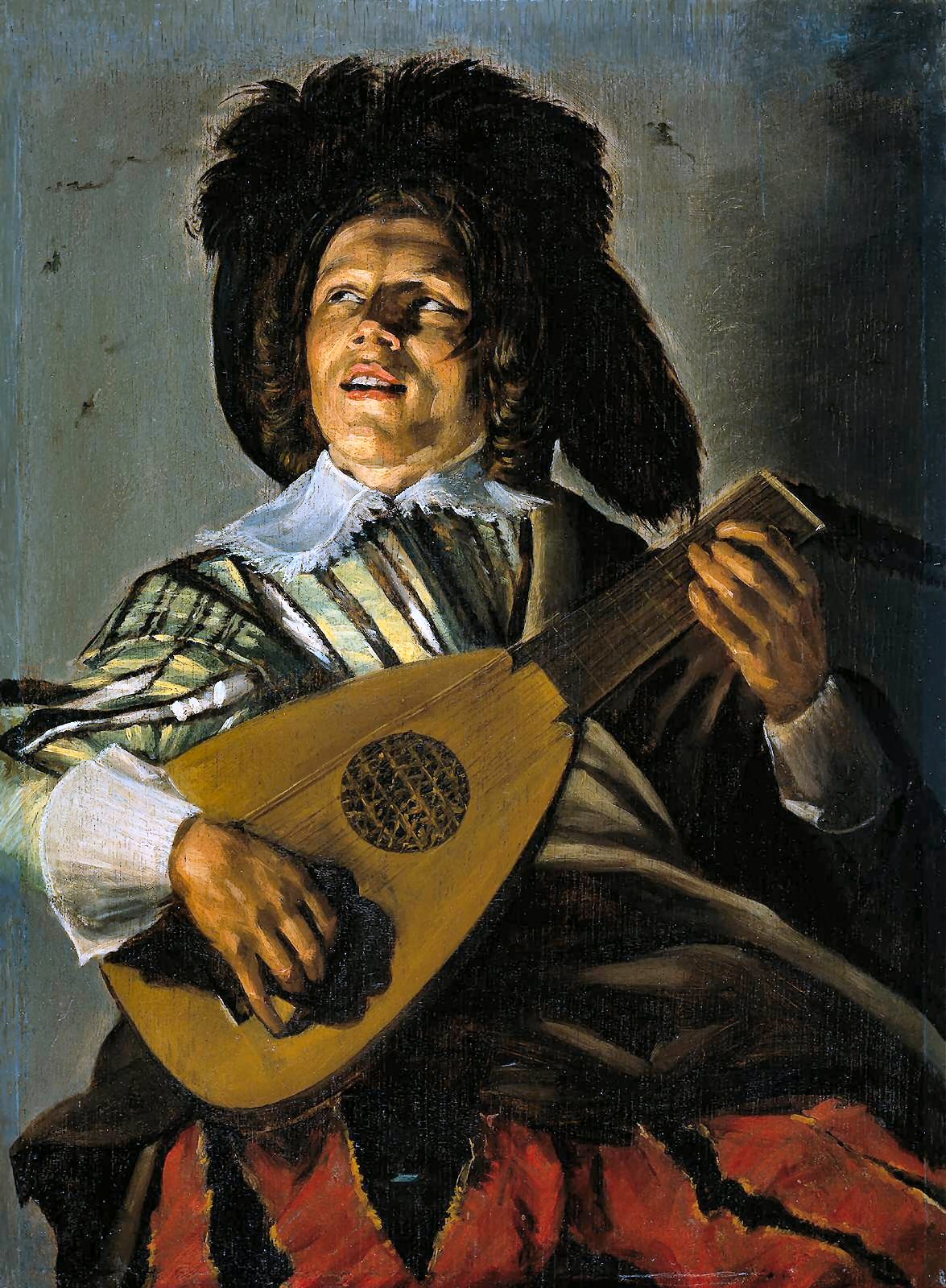

Judith Leyster, "The serenade". Oil on panel, 1629. Rijksmuseum Amsterdam, The Netherlands.
A cheerful lutenist, extravagantly dressed and singing a song - a serenade - is accompanying himself on the lute, a stringed instrument that was especially popular in the 16th and 17th centuries. The painting appears to capture a moment in time, as if the lutenist were caught in the middle of a song. The young man glances upward and seems entirely engrossed in his music. Or perhaps he is looking up to the object of his serenade?
The Serenade is the only painting by Judith Leyster in the Rijksmuseum collection. It is one of Leyster's first works, painted in 1629. For many years it was thought to have been painted by Frans Hals. But on the wall, on the right, the work is signed with Judith Leyster's monogram: JL*, the star, being a a play on her name, Ley-ster, Lode-star.
The lutenist is lit from the left, the light coming from outside the painting. The shade on the face and hands suggests that the extraneous light source would have been somewhere near the young man's right elbow. Deep shadows and powerful contrasts are the result. But it is not entirely consequential. Because he is leaning back slightly, the lutenist's forehead should really be less brightly lit. The top, dark background does not actually touch the musician. It leaves a light, bright edge of ground around the figure, particularly around the hat. A delightful effect: it gives the lutenist a certain radiance.
Source: Rijksmuseum Amsterdam